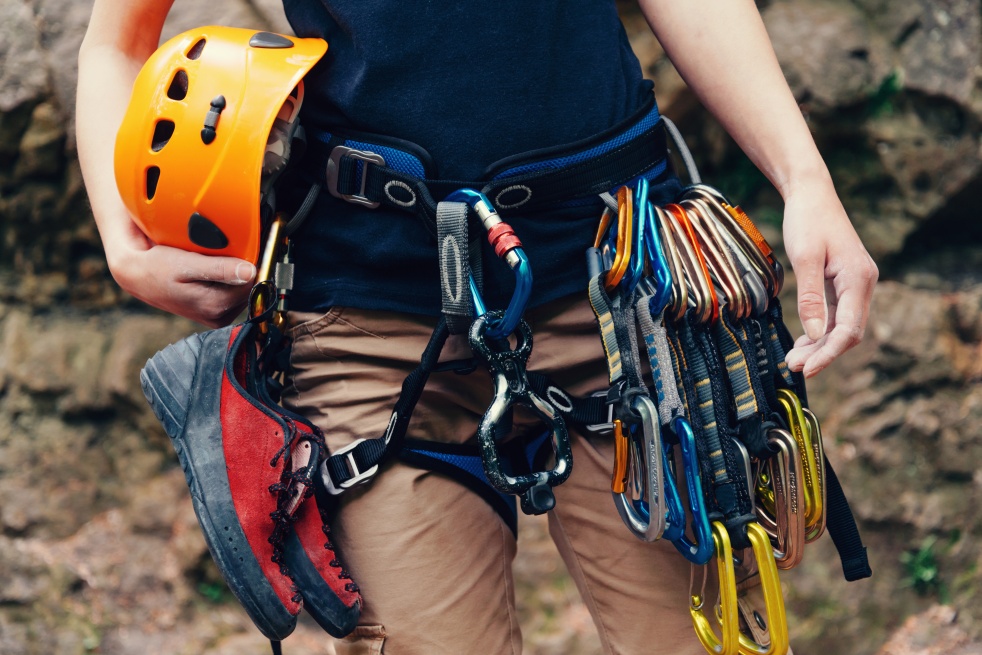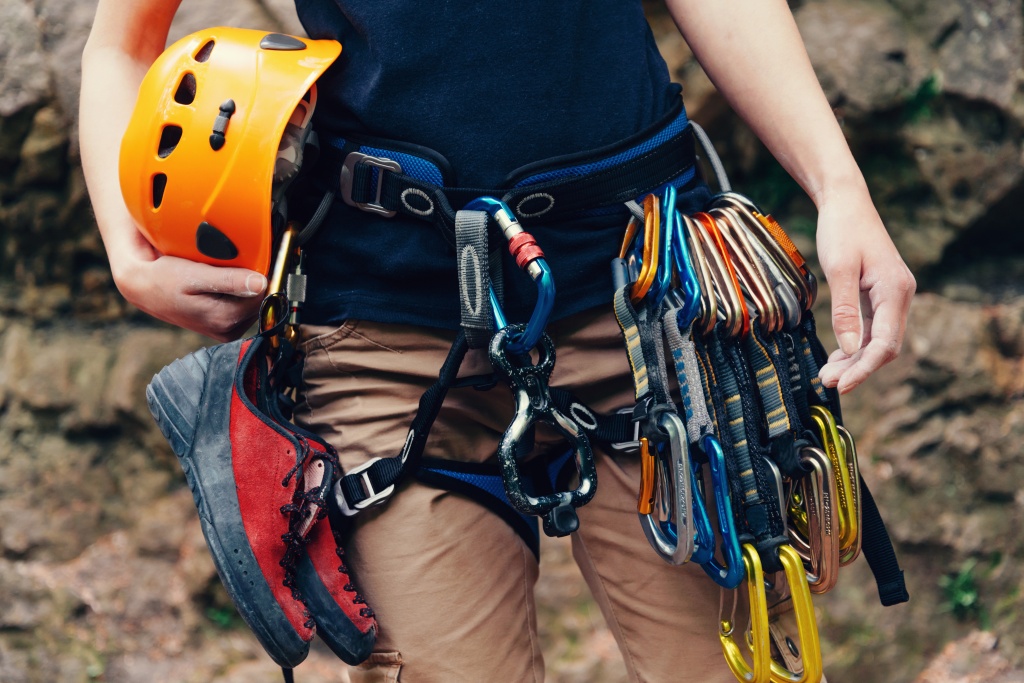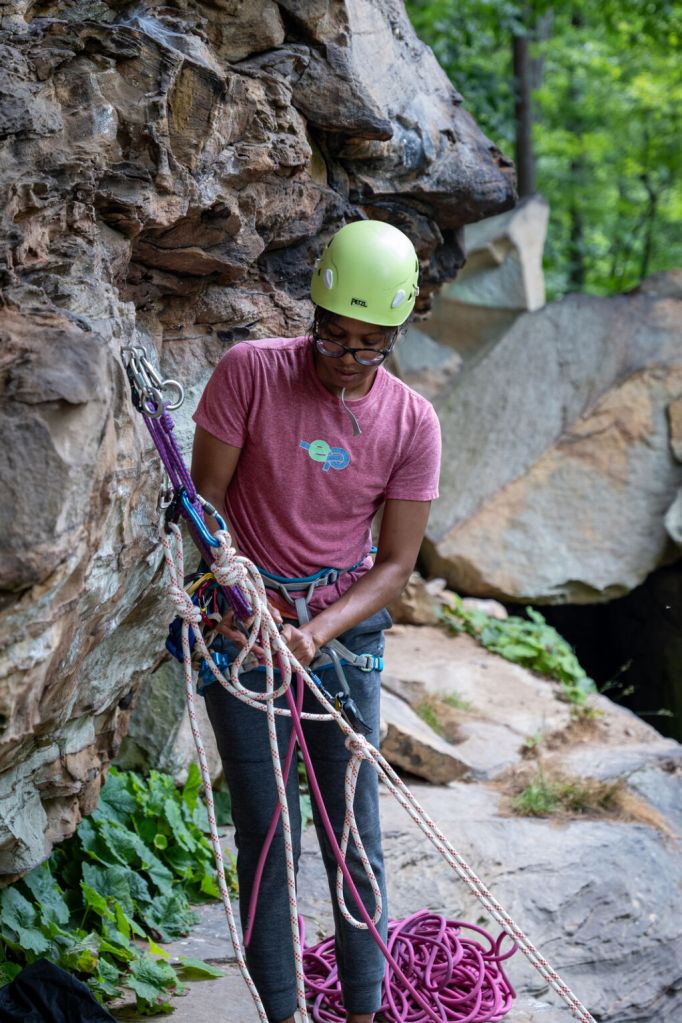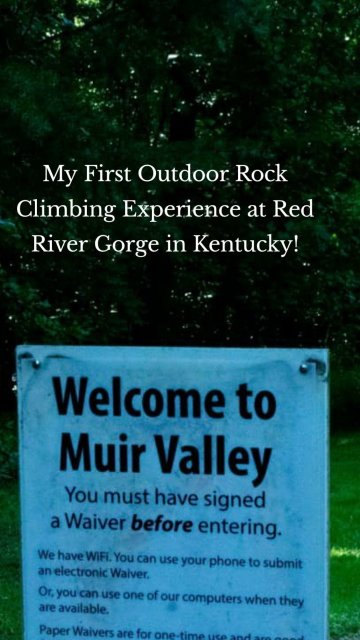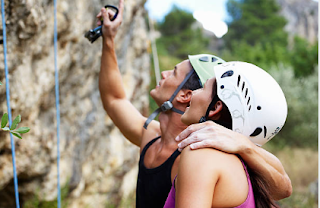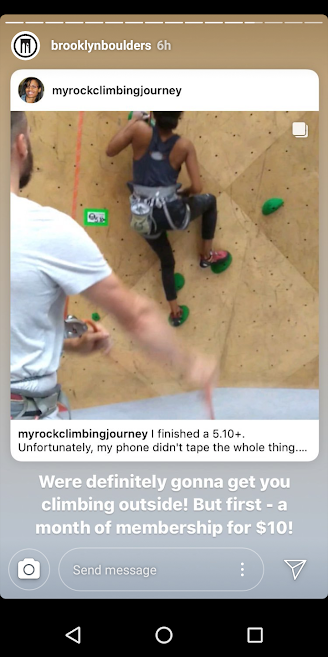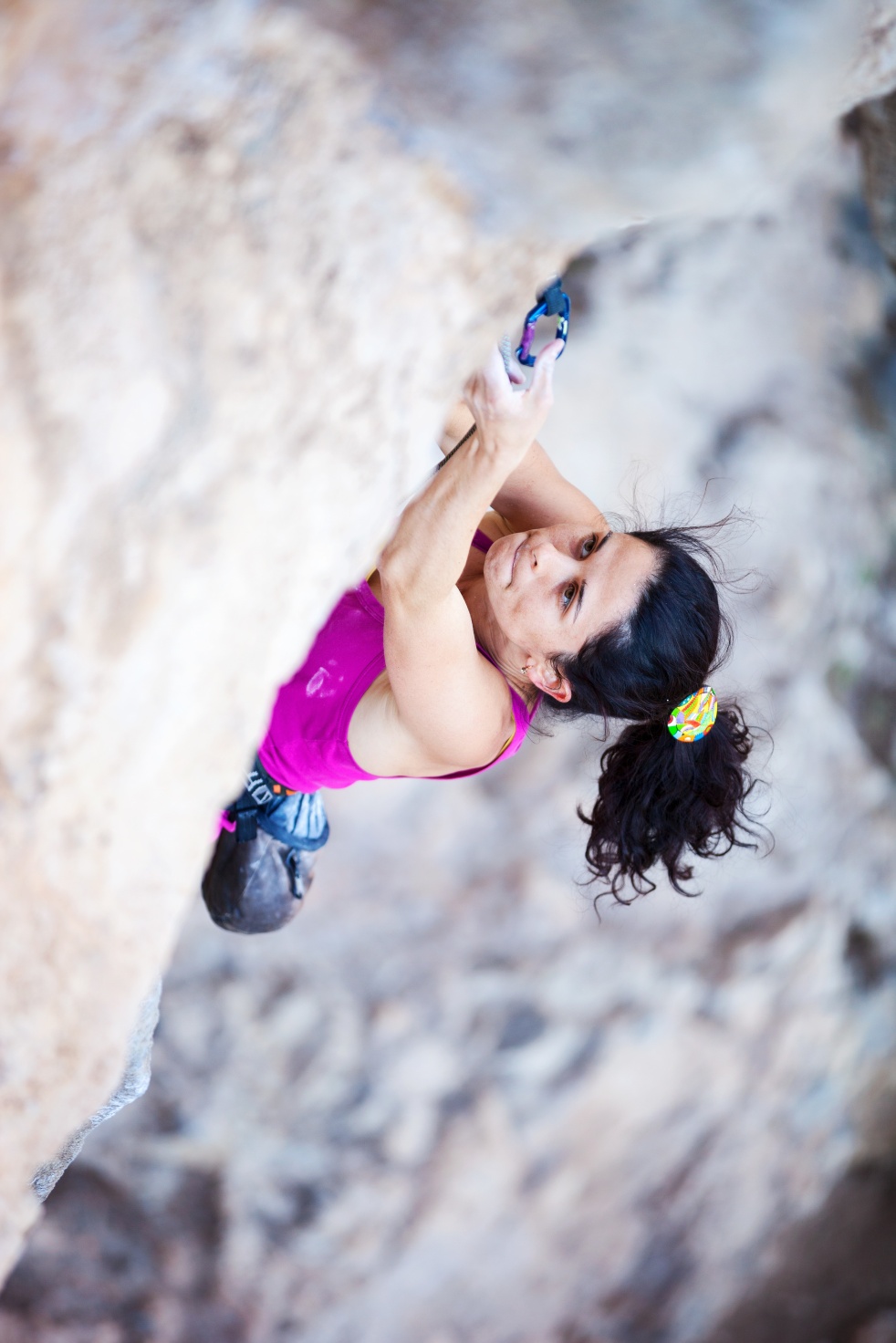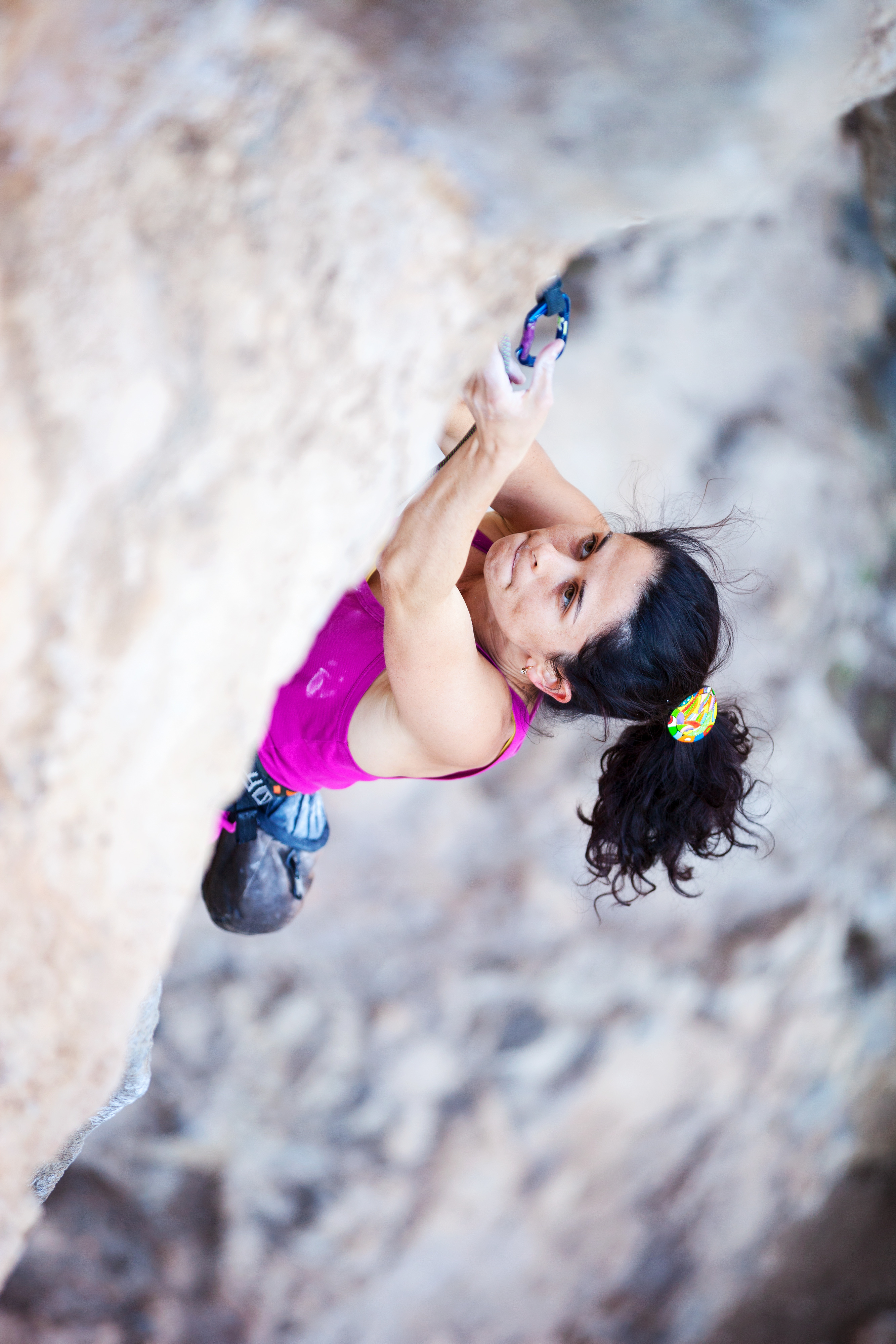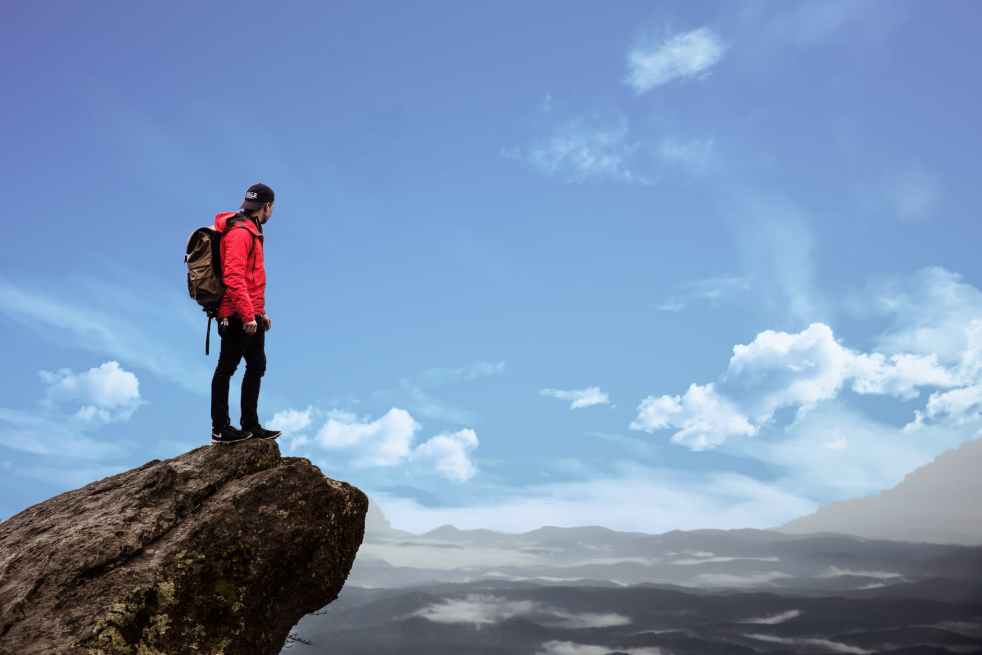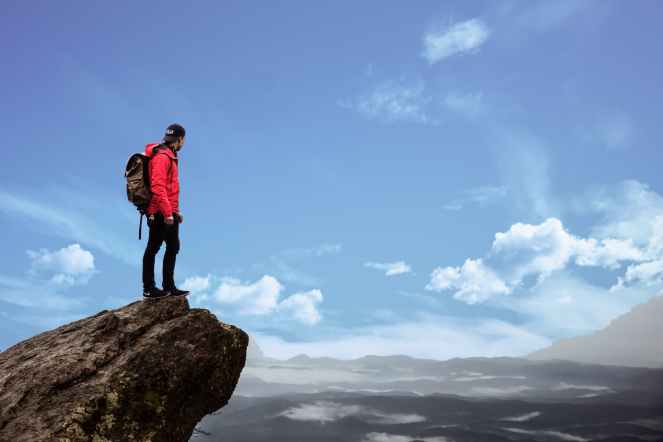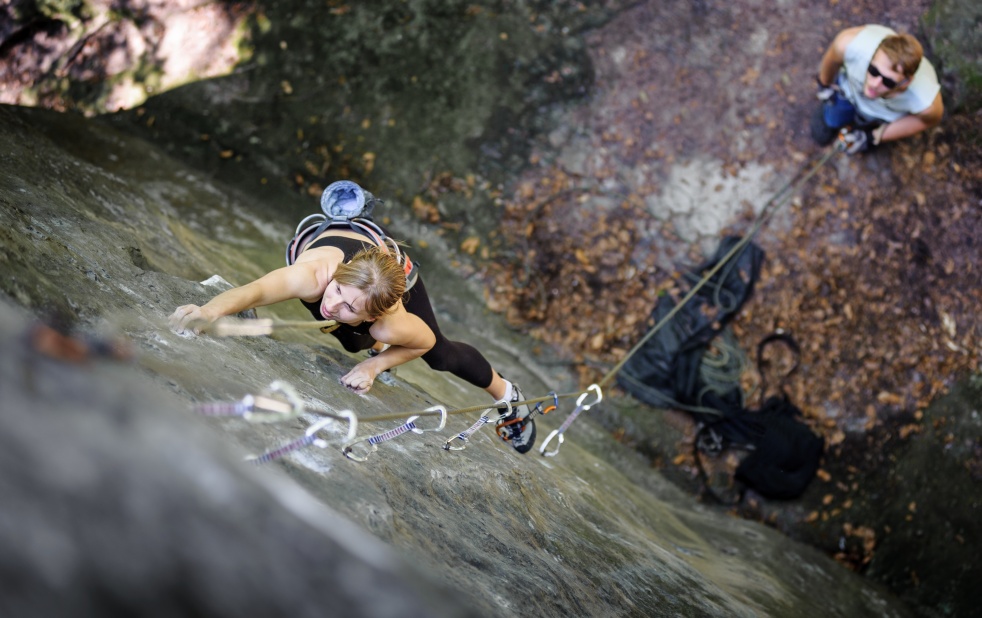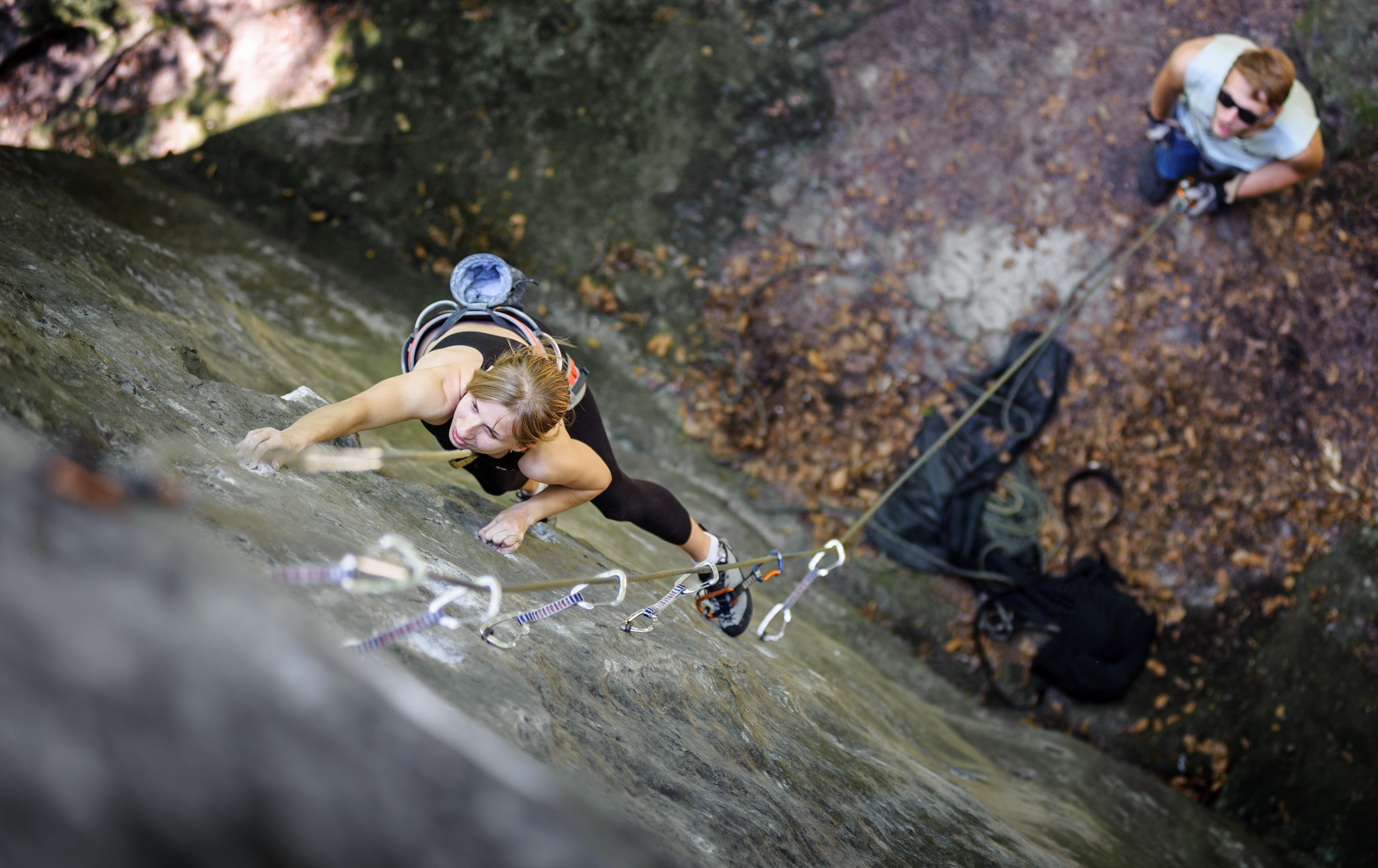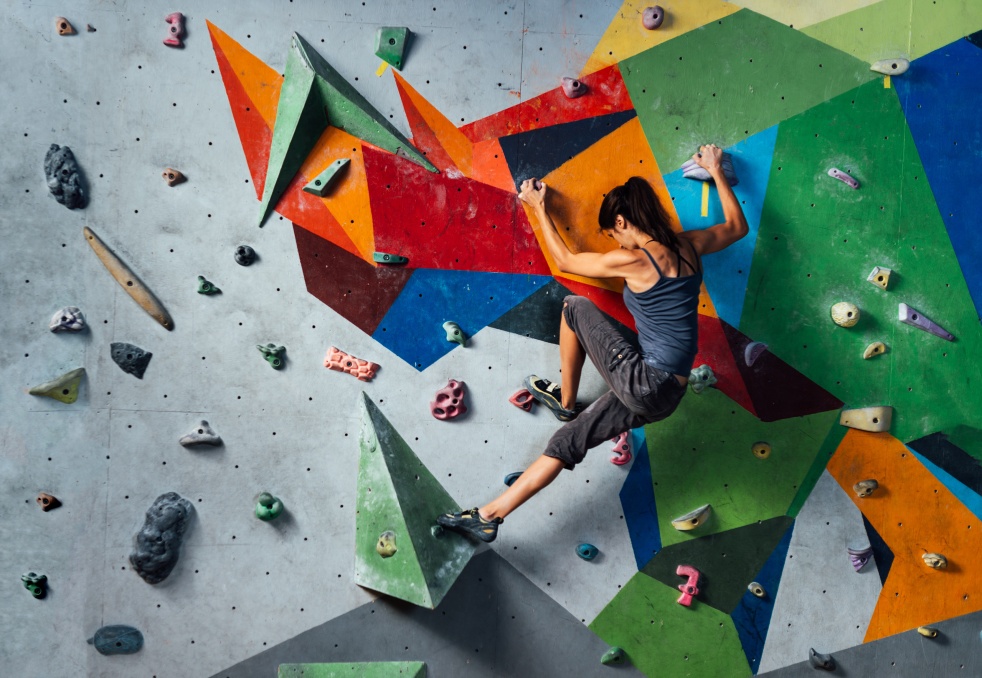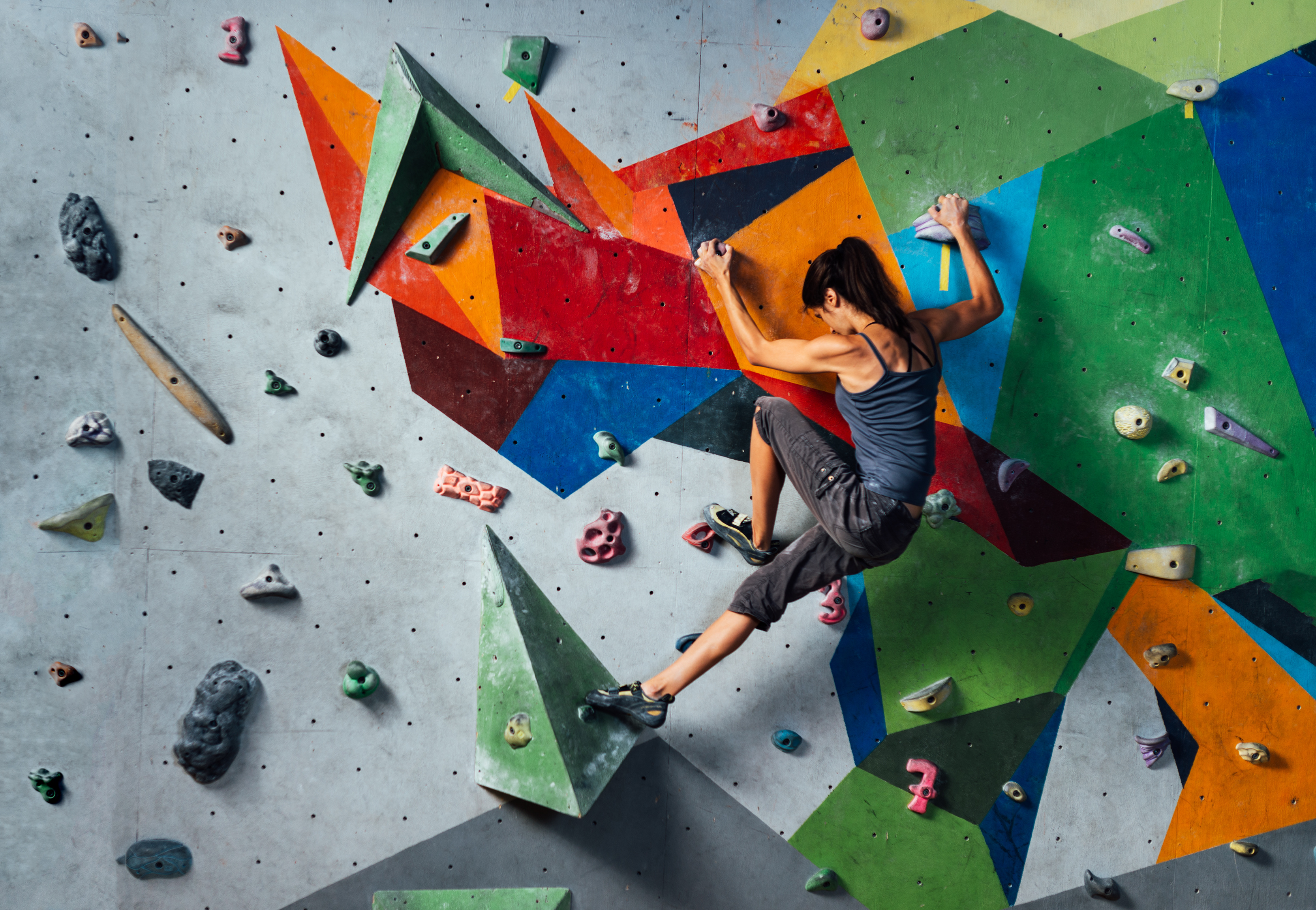It’s been a little while since I finished the second part of my lead climbing class and passed the lead test after a second try. Let’s dive into my journey and recent climbing adventures.
An Exciting Day at Brooklyn Boulders:
Yesterday, I had the pleasure of climbing with my regular Meetup group at Brooklyn Boulders. I squeezed in some lead climbing after helping a fellow climbing partner with his lead test, which he aced. He was one of the lucky climbers who didn’t need to take a class to get lead certified at BKB. His seasoned climbing experience, both indoors and outdoors, made it a breeze for him. The highlight of my day, however, was when I and nine other climbers were featured on Brooklyn Boulders’ Instagram. We submitted our climbing photos and videos for a chance to win a one-month membership for just $10 in honor of BKB’s 10th birthday. I was thrilled when I was one of the winners. It came just in time as I had only two passes left in my 10-pack. Happy Birthday Brooklyn Boulders!
First Class Recap:
In my previous blog post, I detailed the first part of my lead climbing class, which included learning about quickdraws, how to use them while climbing, and the three key mistakes to avoid while lead climbing: Z-clipping, back clipping, and back stepping. If you missed it, you can read more in my previous post.
Second Lead Class Recap:
Upon our return to the second part of the class, it was time to delve into practice falls and lead climbing. We couldn’t literally take falls, but we could do demo lead climbing and falls under the guidance of our instructor. We honed our command drills for taking rope, feeding rope, and hand positioning for a fall. The focus of this class was learning how to lead belay.
Mastering the ATC:
We learned the importance of feeding the rope quickly while observing the leader’s clip and then taking out the slack once the leader secured a clip. The first three clips should keep the rope “tight” to prevent the climber from hitting the ground in case of a fall. When feeding rope with an ATC, the belayer pulls the rope with their left hand, automatically pulling up the break hand (right hand). The break hand then slides down the rope to feed it into the ATC, never letting go of the rope. Maintaining close proximity to the wall while belaying is crucial to avoid being smashed into it if a fall occurs. The belayer should steer clear of the climber during the first three clips, known as the “red zone.” Being on the climber’s side is a safer position. As the climber ascends higher, it becomes acceptable to be “under” the climber while belaying.
Stance plays a pivotal role in belaying. Keeping one foot forward helps maintain balance and steadiness, ensuring the right position to respond to a fall. Unfortunately, we didn’t get to practice belaying on a grigri during the class, but I found that belaying with an ATC worked well for me.
Catching a Fall with Grace:
For both short and long falls, a lead belayer should “embrace” the impact by moving “up” with the fall. If the belayer is lifted off their feet, they need to face the wall or rock, with their feet ready to land on the wall or rock for stability. Being close to the wall or rock is essential to avoid being thrown into it during a fall.
The Lead Test:
I completed my lead class on the 11th of this month and took the lead test the following week. My partner at that time also needed to pass the test for lead certification. The test has three components: naming the three common lead climbing mistakes, demonstrating a lead climb, and showcasing belaying skills. We were asked to identify the three common mistakes and explain why they should be avoided. Following that, we each had to lead a climbing route, fall twice, and then finish the route. This part proved physically challenging as falling takes a toll. But I persevered.
Once the climbing portion was completed, we moved on to the lead belaying test, which involved showing how to position the rope on the ground, secure a knot at the end of the rope, ensure that the rope and the belay device were properly inserted into the carabiner, and more. We had to demonstrate how to feed the rope, take the rope, and catch a fall, including knowing when to execute these actions.
My first attempt at the lead test ended in failure, and I was disappointed. However, the tester’s strict approach helped me understand my mistakes. He pointed out that my technique was fine but I needed to climb quicker while clipping and avoid being under the climber during the first three clips.
After more studying and practice, I decided to retake the lead test with a different tester. During the test, I initially thought I might fail again as I struggled with a challenging route that had tricky finger holds (incidentally, I conquered that route yesterday). The tester gave me another chance by allowing me to choose a less challenging route. She commended my belaying skills, as well as my ability to fall and clip. When she told me I’d passed, I was ecstatic. Though I didn’t need to complete the route after falling, I was willing to do so if she had asked.
Final Thoughts on the Lead Climbing Journey:
My journey into lead climbing was everything I expected it to be. Challenging, yes, but also incredibly fun. I found myself enjoying falling, of all things! I still need to work on my clipping skills. Perhaps I’ll explore other techniques demonstrated by fellow climbers. My next step is to take the BKB Climbing Workshops: “Stop Saying Take: Mental Training for Sport Climbing” and “Sport Anchor + Rappel.”
Question of the Day:
What was your experience like when you took your lead climbing test? Do you have any advice for those interested in lead climbing? Share your insights with us!

